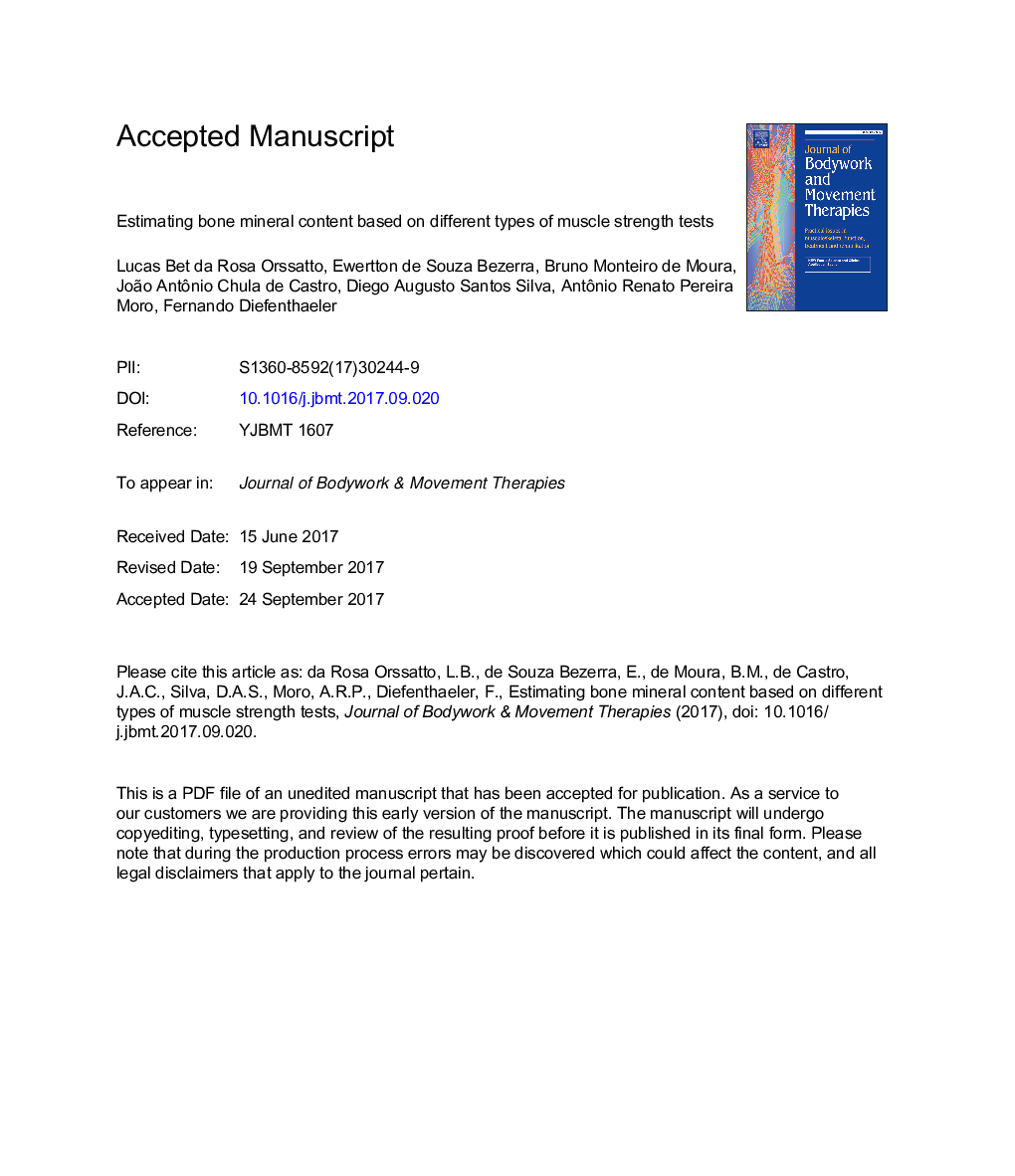| Article ID | Journal | Published Year | Pages | File Type |
|---|---|---|---|---|
| 8558946 | Journal of Bodywork and Movement Therapies | 2018 | 26 Pages |
Abstract
The aims of this pilot study were to verify which muscle strength tests better explain bone mineral content (BMC) of the femoral neck and lumbar spine and to develop predictive equations to estimate femoral neck and lumbar spine BMC. Twenty-nine subjects aged 56-76 years old (12 women and 17 men) participated in the study. Femoral neck and lumbar spine BMC was evaluated by Dual X-ray absorptiometry (DXA). Muscle strength measurements included maximal isometric voluntary contractions of knee extensors and flexors, vertical jump, 5-repetition maximum of the leg press (5-RMLP) and seated leg curl (5-RMLC), and handgrip strength. Women presented a moderate to strong correlation between femoral neck BMC and 5-RMLP (r = 0.819), 5-RMLC (r = 0.879), knee extensors peak torque (r = 0.699), and handgrip strength (r = 0.663), as well as between lumbar spine BMC and the 5-RMLP test (r = 0.845) and manual grip strength (r = 0.699). For females, the 5-RMLP and 5-RMLC tests most fully explained femoral neck BMC (R2 = 0.859) and the 5-RMLP test and body mass explained lumbar spine density (R2 = 0.757) for females. Men did not present correlations between BMC and strength variables. For females, the 5-RMLP and 5-RMLC variables explained the variations of femoral neck BMC, while 5-RMLP and body mass explained lumbar spine BMC. Future studies should evaluate a larger sample size and prioritize the strength tests with a greater predictive capacity.
Related Topics
Health Sciences
Medicine and Dentistry
Complementary and Alternative Medicine
Authors
Lucas Bet da Rosa Orssatto, Ewertton de Souza Bezerra, Bruno Monteiro de Moura, João Antônio Chula de Castro, Diego Augusto Santos Silva, Antônio Renato Pereira Moro, Fernando Diefenthaeler,
